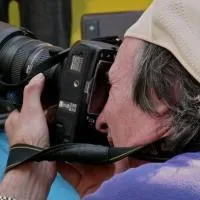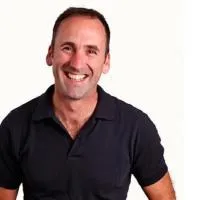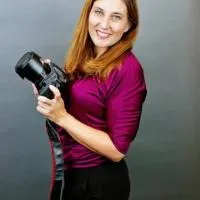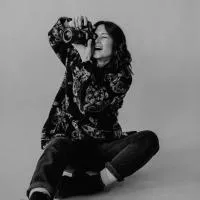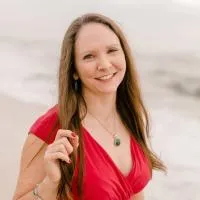Contents
When building their website, photographers often get stuck when creating the About page.
Simple at first sight, there are a lot of details that go into writing the perfect “bio”, so the process can become quite challenging unless you have some guidelines in place.
People usually have a hard time writing a short description about themselves, because they’re unfamiliar with their target audience, therefore they don’t know how to tailor the text properly. Or they do, but it’s simply difficult to satisfy different types of visitors (some will want facts, some will want more personality/creativity).
Let’s explore all the main aspects that go into building a great “About” page for your photography website:
1. About page navigation item
First of all, how should you call it?
The norm these days is to name it “About”, with “Bio” the second most popular option. Any other “creative” option creates more confusion (Experience, Skills, History, Info etc.)
If you’re a group of photographers or an agency, “About Us” is more appropriate.
As for its position in the menu, it usually sits second (after “Home”) or towards the end (before “Contact” which should be last).
2. Title of the About page
When users reach this page, what do they see at the top? Don’t just leave the title “About” or “Bio”, people already know they’re on that page, they clicked on the navigation link to get there.
Try to get more personal than just “About John Doe Photography”, and say something more conversational (“Welcome to…”, “Who we are”, “Meet John Doe” etc.)
3. Short description / bio
First, let’s get a birds-eye view. The bio must satisfy at least two types of visitors:
- buyers and companies who scan the page for your skills, accomplishments, location, and generally just looking for facts
- other people looking for a personal connection, reading your history, wanting to see portraits/photos, looking for inspiration
Your (difficult) job is to try to combine these two aspects in a clear and concise manner, while removing the superfluous. We’ll focus more on the personality aspects, because psychology plays an important role in business relationships too, but don’t neglect the simple enumeration of facts where it’s due.

The bio text is the most important element on the page, the thing that people come to this page to see. It should basically communicate, in a few paragraphs, what you & your photography business are all about.
If you’re really not comfortable writing your biography, you should indeed consider hiring somebody to write it for you. But hopefully these notes will help make things easier for you.
a) Purpose
The copy on the About page should answer these questions:
- Who you are
- Where you come from (because many people scan the About page to find the author’s location)
- Your experience/skills
- What makes you unique (why you’re doing what you’re doing, what motivates you)
- How you can solve your clients’ problems (if you sell any services or products)
Some website owners prefer merging the About and Contact pages, in which case it’s essential to include your contact info on the page, making it loud-and-clear how visitors can get in touch with you. Make sure you’re combining these guidelines with the best practices for building effective Contact pages.
b) Length of text
A few paragraphs at most, this is not the place to go in-depth about your childhood. If you think a longer and more detailed bio would be relevant, you can place that on a separate page or blog post and link to it from the About page.
Most of the times, though, you’re saying more by saying less.
c) Intro paragraph
The first paragraph should really be your photographer elevator pitch, a sentence or two describing what you’re all about, making visitors resonate with you and what you stand for. If you begin the page directly with “I was born in… and then I went to college in…”, people might already feel sleepy :-) And don’t start with “Hello, I’m John Doe and I…”
Try to make people resonate with your work by giving small glimpses into your life and work that might appeal to your target audience.
d) Your personality
Remember that you’re writing this for humans, not for search engines in particular. Or at least that’s what you should be doing. So it helps to be friendly, confident and clear, showcasing all the communication skills you use when talking to someone face-to-face.
Inside the text, it’s usually a good idea to also include some humor, to show your personality in some way: you don’t have to go at-length about your personal life, but a few glimpses into your personal preferences would be nice.
And beware of the invisible line between being funny and being condescending. Get feedback from some close friends.
Here’s a brilliantly written About page, full of humor and honesty: https://www.inadream.land/about
e) Tone of voice
Even if you’re very successful, don’t brag too much, people can sense that from miles away. It’s normal for you to showcase your achievements and skills, but try to also write about your struggles, about something you’re still actively learning.
Clients and photo buyers like to see confidence, progress and enthusiasm, instead of just over-the-top self-praises.
P.S. How many exclamation points or ALL-CAPS words are you using? :)
f) Spelling / grammar / semantics
Too many people have writing errors on their site. Here are some relevant snippets on this topic from my “60+ Photography Website Mistakes guide:
Due to not being a native English speaker, or out of simple negligence, mistakes fall through the cracks.
You should always double check all your texts and even get someone else to proof-read your content. Then check again.
People are very quick to notice mistakes, and they lose trust once they spot too many writing errors, they get put off by the obvious lack of care. This is even more valid today when you have a very short amount of time to create a good impression, surrounded by tough competition.
“Grammar errors put your website in a bad light from the start,
you’re only playing catch-up afterwards.”
“60+ Photography Website Mistakes” guide
g) First person or third person?
The aim of the About page is to build trust and get people to know you better. You’re making things difficult if you’re speaking about yourself in the third person.
First-person writing always sounds more honest and humble.
4. Call to action at the end of the About page
Let’s get back to the mother of all questions: “WHY?”
Why do you have to go through all this work to create a good About page? What’s the reason? The main idea is that the purpose of the page is to give visitors some context about your work and to convince them to do something.
So where would you like visitors to go next? Sure, they can choose any page from the navigation, but this is your chance to guide them to what you want.
So think about the next logical step, the flow of your site: now that they’ve gotten to know you better, should they go ahead and leave you a message or should they see a list of services or products you offer?
And then make the call-to-action button stand out, don’t just hide it within the rest of the text.
5. Self-portrait
I couldn’t have said it better than Jasmine Star did on her great blog post titled “The Importance of a bio photo on a website”:
“Studies have shown that humans create trust, firstly, on a visual level. We initially study a person’s eyes, then judge his/her overall demeanor. Because a business is largely researched on the web, the best thing a business owner can do is create a peripheral layer of trust in a short amount of time. A photo does this in spades.”
Great, so a nice self-portrait can create a lasting impression in visitors’ minds. But don’t forget to use a professional looking image. I’m not saying it should be sober, just that it’s technically well shot. You can’t present yourself as a professional photographer with an amateurish portrait shot by someone you know with their phone.
You have to get comfortable in front of the camera as well, not just behind it.
You can even take things one step further and display a video about yourself or a recent featured project, here’s an example:

Jason temporarily replaced his “About” page self-portrait with a video promoting his latest project.
6. Social media profile links
People should get to know you better, right?
Then by all means, let users follow you on any social media outlets you use, by including links to your respective profiles.
There’s not much reason to include share/tweet links here though, I’ve rarely seen users share About pages.
7. Testimonials
Conveying trust on your site is critical, especially in this age when everybody is fighting for the user’s attention.
Testimonials and displaying social media counts (number of re-tweets, likes, shares etc.) are the main ways to display social proof.
To make them more honest and convincing, testimonials should include, besides the quotes themselves, the name, portrait & job title of those people. Optional items are their location and a link to their site.
8. Getting creative with your Bio page
Here are some ways to differentiate yourself:
- Show more images from your life (maybe you with your spouse http://gladysjem.com/about/)
- Having a more creative self-portrait (maybe with you out into the field http://www.wildscenics.com/about-2/vincent-grafhorst/)
- Listing fun facts about yourself (http://andrialindquist.com/about/ or http://www.michellelangephotography.com/about-photographer/)
- Creating an interactive page (http://gabrielryan.net/#/about/)
Setting a funnier mood is sometimes great, but beware of crossing the border into unprofessional. You have to make things discreet and elegant too, you don’t want to appear amateurish.
9. Memberships, associations, client lists, interviews
If you have them, don’t forget to leverage these things, you’ve earned them!
If you’re just starting out and don’t have a client list to brag about, don’t worry about it, revisit this idea after some time. Sounding confident and user-focused is always more important anyway.
If this is a business/agency website (with a team of people behind it), a list of team member profiles (example) and a strong client roster (example) are obviously helpful.
10. About page SEO title and meta description
While the “About” page very rarely shows up in search results on its own (unless directly searched for), you still have to give Google something to “chew” on.
Keep the title simple. Something like “About John Doe” or “John Doe bio” is fine.
As for the Bio page meta description, aim for a one-sentence summary of you as a photographer, ideally also including your photography specialty and location in it. (Inspiration: “Biography of award-winning Canadian photographer John Doe, specializing in this-and-that photography.”)
A ton more SEO tips here: SEO course for photographers
11. Photographer Bio page examples
Let’s explore some samples of great photography About pages that engage visitors & communicate the message well (including some of the ones featured above as links throughout the article):

Mark displays a great video of him working with wedding clients, with the bio text available separately.
 Martin uses a panoramic header image to set the mood, but doesn’t exclude a self-portrait next to the bio.
Martin uses a panoramic header image to set the mood, but doesn’t exclude a self-portrait next to the bio.
 After a clean and concise bio, Zack them lists his various clients, publications and featured events.
After a clean and concise bio, Zack them lists his various clients, publications and featured events.
 Besides a straight-and-to-the-point bio, Todd also makes sure to display social-proof in the sidebar
Besides a straight-and-to-the-point bio, Todd also makes sure to display social-proof in the sidebar
 Sebastien integrated the self-portrait more tightly into the page design, creating a truly unique “About” page. Notice the fingers slightly over the blue Facebook icon :-)
Sebastien integrated the self-portrait more tightly into the page design, creating a truly unique “About” page. Notice the fingers slightly over the blue Facebook icon :-)
12. More About page reading & inspiration
-
- This follow-up article or mine: What to include on your About page if you’re new to photography?
- Learn what top photographers are doing on their Bio pages
- Really good article on how you choose the type of page you create, tune it up a little and then let it do its work: Your About Page Is a Robot (A List Apart)
- Nice article dissecting various photography “About” pages: It’s All About Me! Photographers ‘About Me’ Pages (Lighting Essentials)
- Asking the right questions is critical: How to write an awesome bio page for your photography website (SRL Lounge)
- As with many others of her great posts, Jasmine Star goes to the heart of the problem, giving you a quick guide to write an effective bio: How to write a bio for your website (Jasmine Star)
- Another post from Jasmine about the value of your portrait: The importance of a Bio photo on a website (Jasmine Star)
- For web-design tips, you can’t go wrong with Smashing Magazine. Here are their tips on the topic: Best Practices For Effective Design of “About me” Pages (Smashing Magazine)
- Another good article with some interesting ideas: The Definitive Guide to About Me Pages (WebDesignLedger)
- Great article with a ton of examples: Dos and Don’ts: Writing a Photographer Bio (PetaPixel)
Takeaways
Don’t neglect the importance of your site’s “About” page. It’s often the second most visited page for photographers (after the Homepage of course).
Always have a good self-portrait on the page, write a clear and concise bio, and don’t forget a prominent call-to-action. And drop the “keyword-stuffing” language and write in a natural voice, visitors and Google will thank you in the long run.
Armed with all this knowledge, and having seen what other successful photographers are doing on their “About” page, it’s time for you to revisit your own site with fresh eyes.
How can you improve your page to convey more trust and showcase your true personality & experience?
Have any specific questions? Would you like to post a link to your “About” page? Don’t hesitate to leave a comment below.
What next?
After working on your “About” page, be sure to also improve your “Contact” page:


















